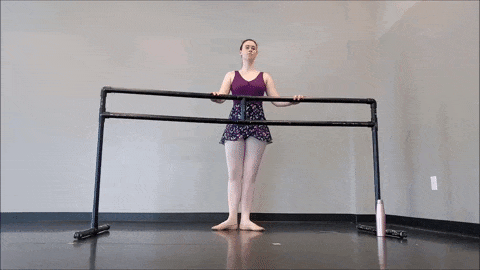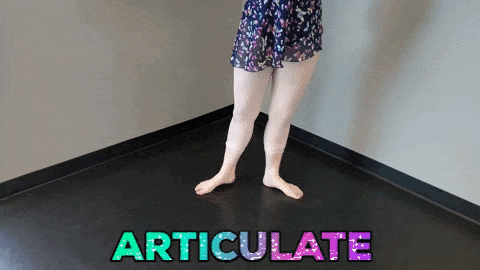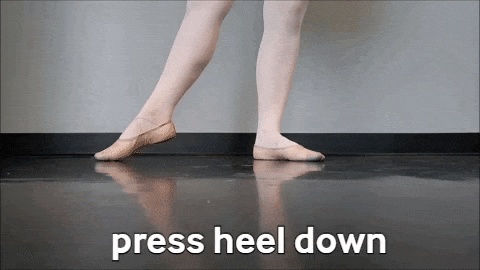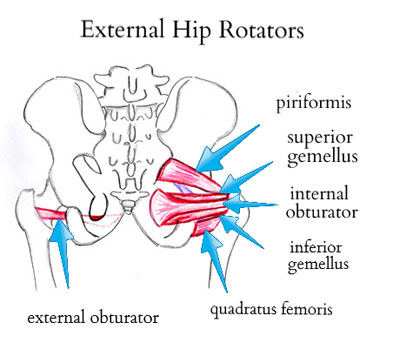Tendu is a foundational exercise in ballet, and is one of the first steps you’ll ever learn! But it’s so much more than “point your toe.” Here are 5 important aspects of tendu to ensure you’re doing it correctly.
Before we get into the nitty-gritty, it is important to remember: Tendu is a movement, not a position. Many dancers think tendu is a position, like first position or arabesque. But tendu is a step! When you start thinking about moving through your tendu instead of to your tendu, you start to understand all the different nuances of it.
1. Tendu is all about Rotation. When standing in first position, think about activating your deep lateral rotators and turning the head of the femur to initiate the tendu. Even if your first position is not 180 degrees, changes are you are not as rotated as you could be. Tendu gives you the opportunity to warm up those rotating muscles, and strengthen your lateral rotators and piriformis.
Wherever your first position is, your tendu should come right out of that, and not be pressed farther to the side than your rotation. Imagine your toe is a paintbrush, and wherever your first position is, your toe will paint a straight line straight out from there.

2. Tendu Articulates through the floor. As you work through your tendu, you should hit all of your foot positions, working through the heel, the ball, and the toe, to get to your highest and longest extension.

Tendus are the perfect pre-pointe and pointe strengthener! Imagine warming up all the intrinsic muscles in your foot as you slowly work through each foot position to the highest of your effort. Make sure as you get to your ball-toe articulation that you really reach and lengthen the toes, and press against the floor. This helps strengthen the posterior foot muscles that help get you onto your pointe shoes.

3. Your tendu should focus on length, not height. This is a bit confusing, but check out the pictures below. These are both the same dancer! But one tendu is significantly longer than the other.

In the first picture, the dancer is pressing the foot against the floor in an effort to heighten the arch, and curling the toes under the foot. This may be a nice arch and provide a good foot stretch, but it’s not a proper tendu. Tendu should extend the leg and lengthen all the muscles to their fullest extent, so that the leg, hip, and foot are properly warmed up and strengthened for the rest of your class. This is why the second picture of tendu looks like the leg is longer.
Please note, dancers with higher arches will still have height to their tendu position. This doesn’t mean they’re doing it incorrectly, simply that their arch is naturally lifted and more flexible. They should still focus on lengthening the leg as a whole.
4. Tendu is all about compression. Okay, now you’re fully lengthened, articulated, and turned out in your tendu position. Know you have to get back to your position.
Going back to rotation, think about spiralling and turning your femur and leg as you come back into your position. You should initiate the closing of the tendu with rotation.

Once you do that, activate the inner thighs (adductors) and the quadratus femoris (the “squeeze-your-bottom” muscle) and really imagine your legs coming together against resistance, like you’re squishing something between them and compressing both of your legs into one leg in the middle. This is compression will help strengthen your legs and warm you up on a whole new level!

I sometimes call this “sipping the milkshake,” especially when teaching beginner level ballet. Imagine your legs are a milkshake, and you are sucking the milkshake up a straw. This helps you pull your legs in and up, and really feel the adductors.
5. The heel is just as important as the toe. Remember, tendu means stretch, it doesn’t mean “point” or “toe.” So what part of the leg is the tendu stretching? Answer: all of it. Including your achilles tendon.
When your leg is extended and pointed, your achilles tendon is engaged, and is shortened. As you close your tendu, think about pressing the heel into the ground and lengthening and stretching the achilles while you compress your leg to close.

Stay Strong and Happy Dancing! Don’t forget to grab your Ballet Box, and use coupon beyondthebarre for 10% off!
Miss Haley
About Beyond the Barre:
Beyond the Barre is dedicated to teaching dancers about ballet technique, injury prevention, wellness, and taking care of your body while learning to enjoy the artistry and enrich your training experience.

